WET IC PROJECTS EMERGE ON TOP WITH KEY DELIVERIES
Strategically placed as the lockdown began, several WET IC projects quickly got off the blocks when operations resumed. Though challenges were many and varied, some significant project teams across regions rose to the occasion, rapidly adapted to the new paradigm and with some strategic decision making and innovative operational methods achieved significant progress.
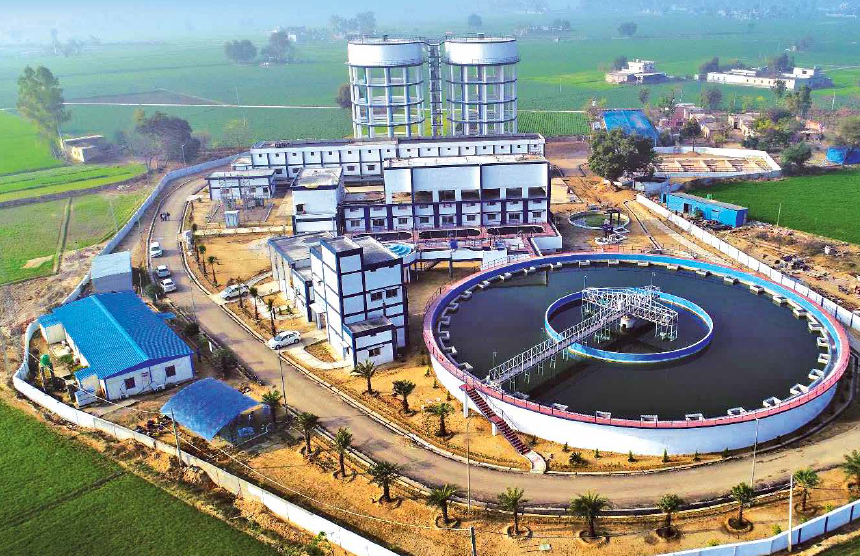
Water lifeline for 200 villages
Having done the hard work before the lockdown, Project Manager, Dinesh Kumar, Banswara-Pratapgarh WSS, successfully commissioned the network across some 200 villages by June 2020. “It was a milestone moment as we moved into the defect liability period,” he remarks with gusto. “It has been a huge effort by the team as our scope of design, construction, and commissioning of water infrastructure across 334 villages in three zones was vast.”
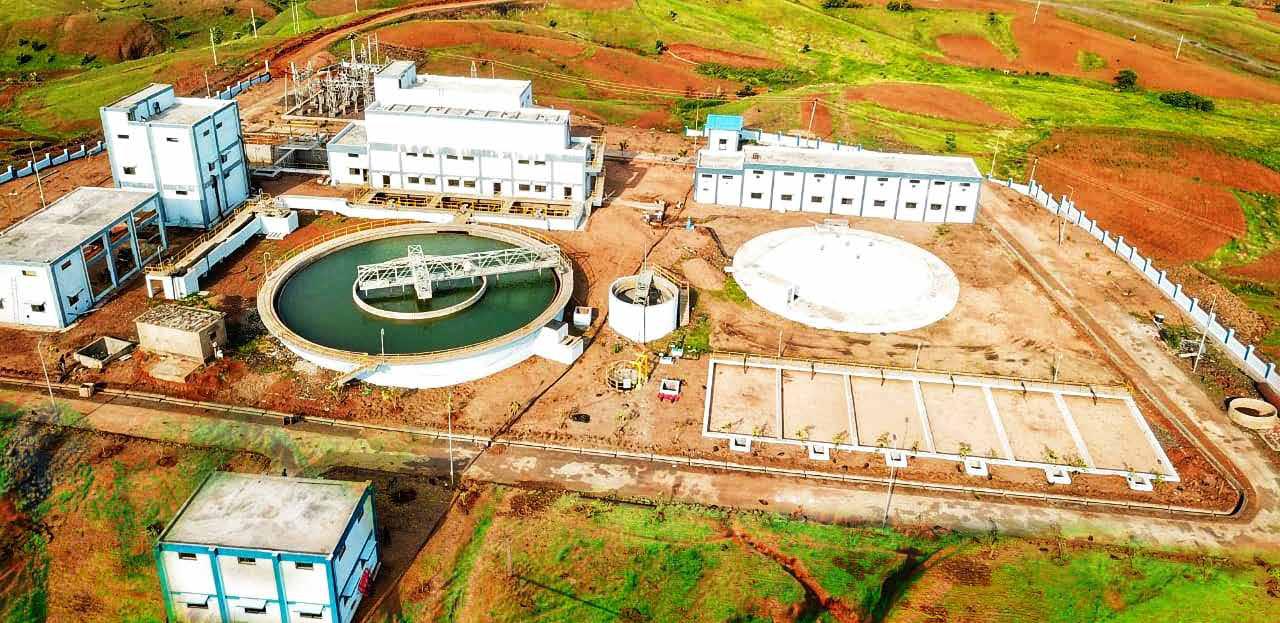
Overview of the 18.6 MLD Water Treatment Plant
Laying 2419 Km of pipeline was the team’s most challenging part as most of the alignment was across the Aravalli hills that called for secure and deep trenching methods. “To execute larger structures like the intake well, approach channel, raw water reservoir and water treatment plant, our approach varied depending on their criticality,” Dinesh informs. Faced with a largely hard rock strata, the process of breaking down was done with utmost safety while specialized execution methodologies were adopted for the 42 m deep intake well with 12 m wide and 200 m long approach channel inside the Mahi dam. “All along our focus was to accelerate safely wherever possible,” he adds, “as the construction, testing and commissioning of civil structures of intake works and pipeline started to complement the final delivery.”

“All along our focus was to accelerate safely wherever possible as the construction, testing and commissioning of civil structures of intake works and pipeline started to complement the final delivery.”
Dinesh Kumar
Project Manager, Banswara-Pratapgarh WSS
In-house digital solutions helped enhance the quality processes while the online SCADA system ensured that the output was as per accepted value limits. Inspection calls were raised in the Cognisite App for different site locations and virtual inspections conducted through MS Teams. “We received the completion certificate on 15th June 2020 and the villagers are now reaping the benefits of regular water supply,” says Dinesh with a smile of a job well done.

1150 KL Overhead Service Reservoir at Banswara-Pratapgarh WSS
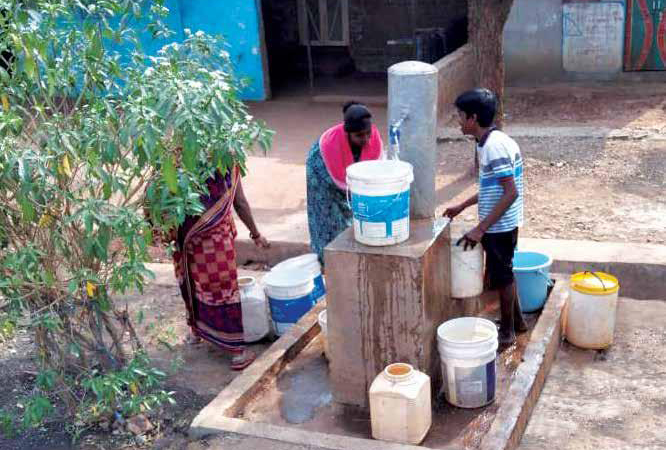
Public stand post for remote location water distribution
Building Punjab’s first Central Water Treatment Plant
The Moga Water Supply Scheme, Punjab’s first Central Water Treatment Plant to feed potable water to around 85 villages is another landmark project completed in quick time. L&T’s scope of work comprised WTP foundation, construction of a 50 MLD WTP, 5400 KL CWR and two MBRs of 1140 KL capacity each, along with 330 Km of DI pipelaying, involving around 8000 cum of concreting. “It is a huge plant spread across 4 acres and key structures had to be raised on an uneven terrain,” Project Manager, Navdeep Kumar Sharma, describes his challenges which the team overcame by resorting to some transformational technologies. “We were the first in the Water Supply BU to implement BIM as an integrator that enabled us to seamlessly close the gaps between the civil, mechanical and electrical drawings. Interfaces were missing in 4 key areas and to reconcile them physically would have taken a lot of rework,” shares Navdeep.

“We were the first in the Water Supply BU to implement BIM as an integrator that enabled us to seamlessly close the gaps between the civil, mechanical and electrical drawings.”
Navdeep Kumar Sharma
Project Manager, Moga Water Supply Scheme
Most of the reviews with the HQ management were done over Smart Glass, another transformational tool, through which the actual work from any location could be viewed. All site engineers were equipped with tablets. For Navdeep it meant huge savings in cost and time and accelerated progress.
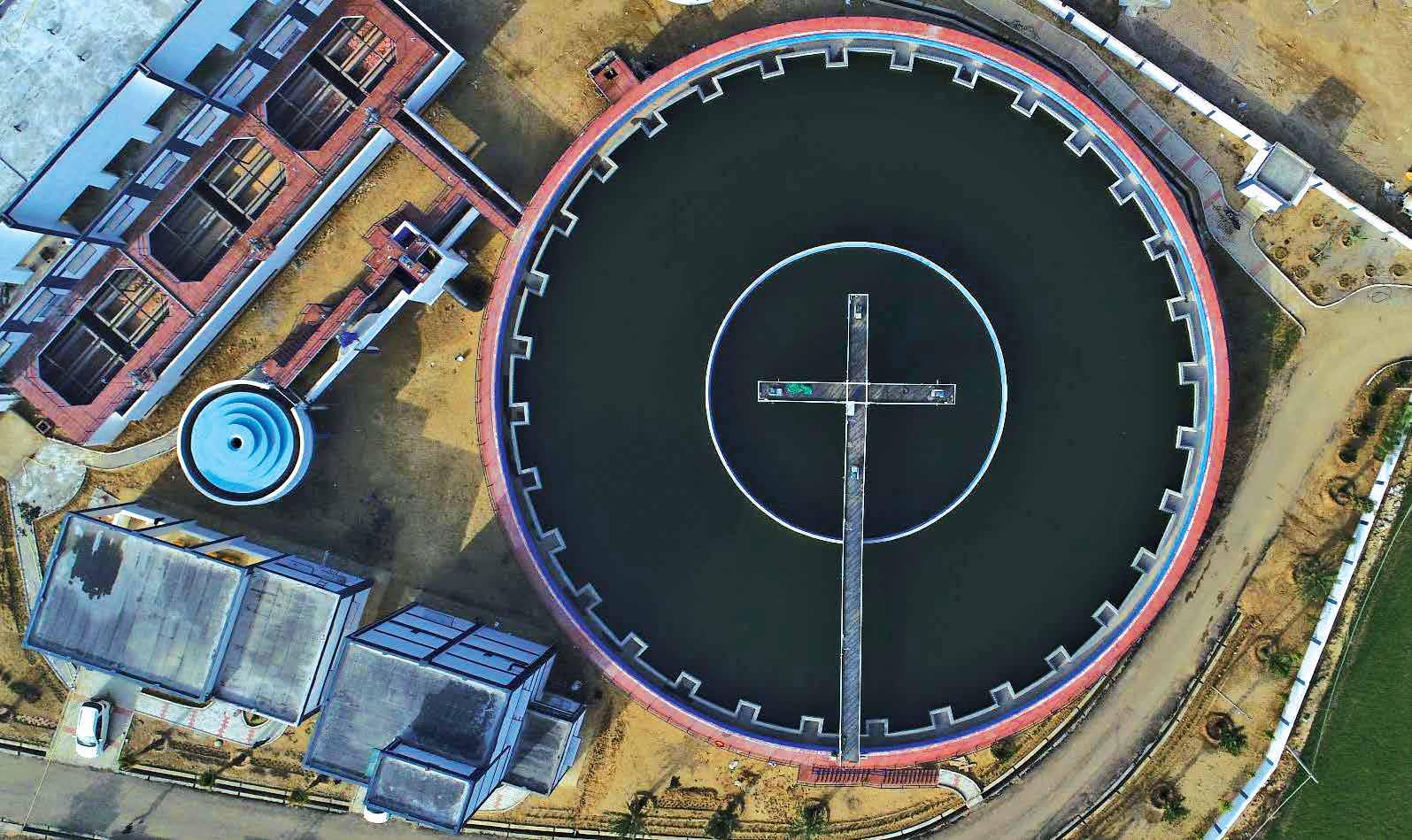
An aerial view of the Moga Water Treatment Plant in Punjab
Feet on ground makes all the difference and the team networked with the local governing bodies to source additional manpower, especially skilled, train the unskilled workmen and carefully formed crews for critical works. Their diligence reaped rewards as they successfully completed erecting a 65-meter structural steel canal crossing bridge carrying twin pipelines mains over the Abhoar canal, a strategic section of the project much to the client’s delight.
Although a model project, the satisfaction for Navdeep and team is greater as they have blessed 68,000 households and 3,63,714 people in rural India with potable water.
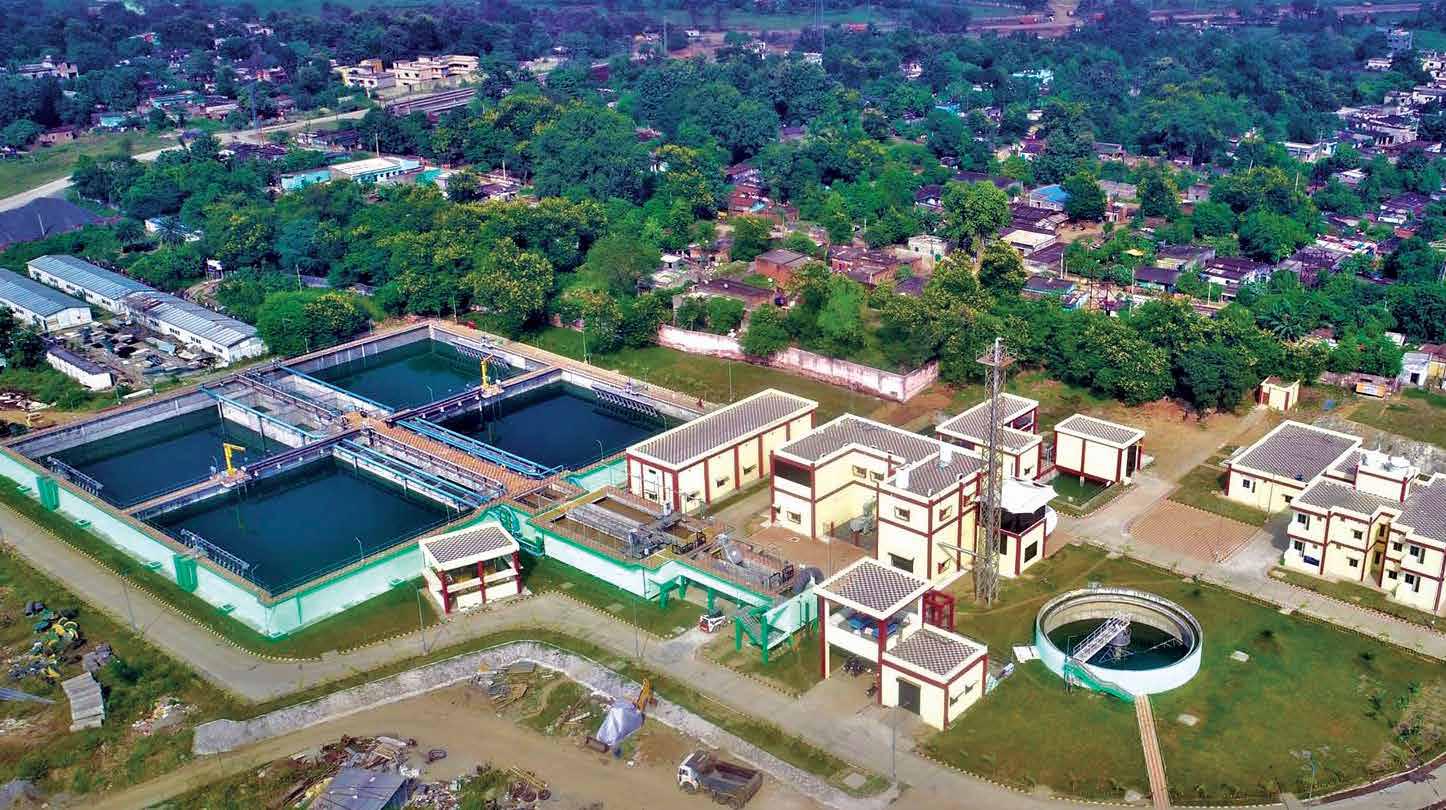
40 MLD Sewerage Treatment Plant at Rourkela
Engineering a composite sewerage system for Rourkela
The steel city of Rourkela will soon receive a vital sustainable infrastructure as L&T’s Wastewater BU team is putting finishing touches to a composite sewerage system that will benefit some 2.5 lakh people and, at the same time, purify the Brahmani river off its pollutants.
The imposing scope of work for Project Manager, C Rajavel and team spread across 5 sewerage catchment areas is to lay a pipeline network across 185 Km, 728 m of RCC gravity sewer by trenchless method, 10611 manhole chambers, 210 Km of house sewer, 5,665 Km of DI rising main, three intermediate sewerage pumping stations, one terminal sewage pumping station and a 40 MLD treatment plant.

“A clear picture of the various interfaces gave us direction to shift gears and focus on the underground works, working out a combination of approaches like the open-cut method, micro tunnelling and precast to complete the work fronts.”
C Rajavel
Project Manager, Rourkela
Constructing the pipeline network and associated works is critical as the alignment runs through the heart of the town with hardly any space for approaches. BIM came in handy for Kamal Kumar Jindal, Asst. Construction Manager as he matched the integrated design with on-ground conditions to finalize his execution plan. “BIM helped to optimise our execution methods and firm up concrete quantities for critical structures such as the trapezoidal wall.” View EHS, WISA, EIP Pragati and QIR app were other digital tools that strengthened the team’s arm. “A clear picture of the various interfaces gave us direction to shift gears and focus on the underground works.” informs Rajavel, “working out a combination of approaches like the open-cut method, micro tunnelling and precast to complete the work fronts.”
With 96% of the work completed, Rajavel and team are very close to handing over the 40 MLD plant and the main pumping station by June 2021 and he smiles at the thought of 2000 Rourkela households singing L&T’s praises.
On a clean Ganga mission at Barrackpore
A part of the humongous task of cleaning river Ganga rests on the shoulders of Project Manager, Amit Kar, and his team, at the Barrackpore Integrated Sewerage System project. “We are mandated to lay 247 Km of sewer lines of varying dia (150-900 mm diameter DWC and RCC pipe), 12 pumping stations and 2 STPs of 6 & 18 MLD.”
It is a typical city job with nagging issues waiting around every corner for the team that includes poor soil condition with a high-water table, constrained approach roads and a forest of underground utilities. Technology tools cleared the ground for Tamal Saha, Construction Manager. “We deployed GPR survey and the utility detector to identify the underground utilities while the risky trenching works were fast tracked safely with horizontal drilling machines and trenchless pipe laying methods.”
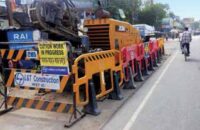
Horizontal drilling machine deployed at Barrackpore Integrated Sewerage System Project

“We turned the pandemic situation into opportunity by engaging more machinery at lower costs, organized factory acceptance tests for the client and engaged our limited manpower for the most critical tasks that have helped us achieve progress despite several setbacks.”
Amit Kar
Project Manager, Barrackpore Integrated Sewerage Project
For other significant structures like the STPs, the project team relied on Lean Management techniques to maximize efficiencies and productivity. “We turned the pandemic situation into opportunity by engaging more machinery at lower costs, organized factory acceptance tests for the client and engaged our limited manpower for the most critical tasks that won accolades from our client,” informs a happy Amit Kar. “They have appreciated our efforts especially the safety and quality standards that have helped us achieve progress despite several setbacks.” With 93% of works completed, the team has their goal in sight.
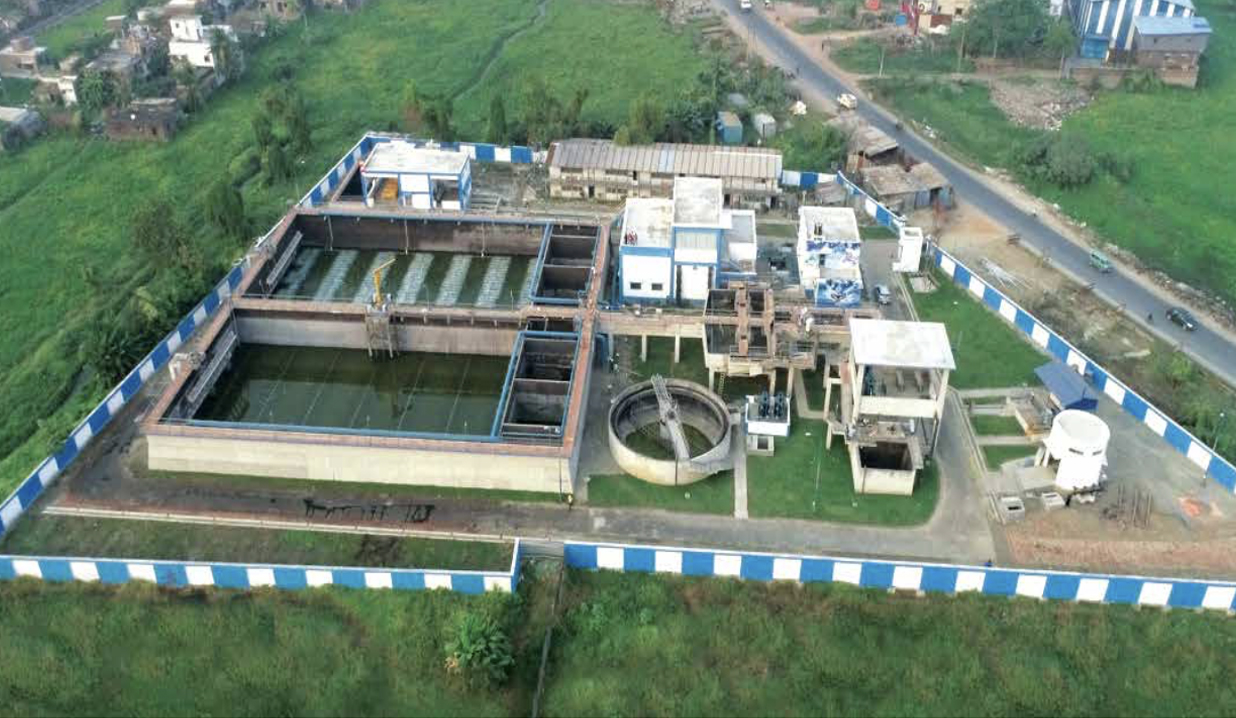
18 MLD Sewerage Treatment Plant at Barrackpore
Ringing in a green future for farmers
Across different regions in the North and South of the country, WET IC is executing large water systems for irrigation which when commissioned will be game changers for farmers. It is a tall order for Parthiban Mohan, Project Manager, at Narmada Kshipra LWS1 Project, that is designed to totally discharge 15 cumec of water, of which 10 cumec will be used to irrigate 30,000 hectares while the remaining water will meet the domestic and industrial needs across villages in 5 districts of Madhya Pradesh.
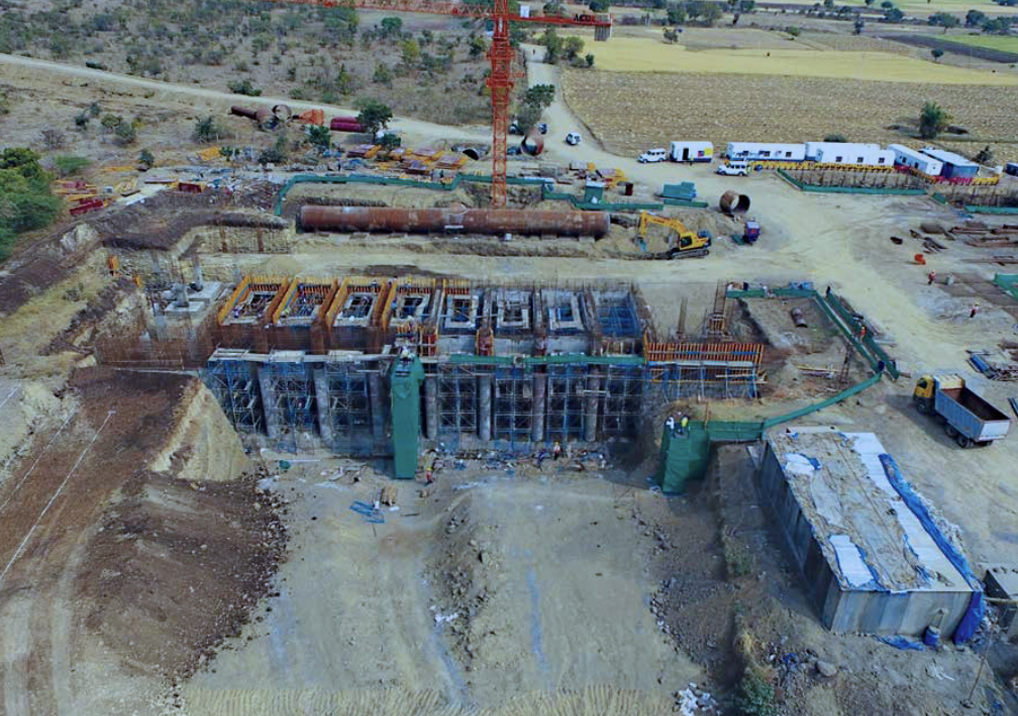
“Our main scope involved laying 409 Km of pipes, constructing pump houses and allied structures,” informs Surya Kant Dubey, Assistant Manager, Mechanical. “Well before the lockdown, we had prepared a detailed micro plan based on which we set up fabrication shops at different locations to facilitate the efficient flow of finished MS pipes.” As Guniting was a major activity, 5 automatic plants were established across strategic locations. “Around 32 km of the pipeline was in a hilly forest area,” points out Parthiban, “and to ensure that work continued uninterrupted without resources idling, we deployed a secure and feasible work approach, blasting wherever it was safe, taking the help of the construction method planning cell to devise a winch arrangement for shifting and laying pipes, and engaging cranes at approachable locations.”

“A mixed group of workmen helped us to maintain our strength. In addition, we rotated the existing labour gang across work zones to familiarize different crews with most of the tasks to reduce dependency on any specialised gang.”
Parthiban Mohan
Project Manager, Narmada Kshipra LWS1 Project
Keeping tab of operations was easy despite the span for Soumitra Mukhopadhyay, Senior Construction Manager, Civil thanks to digital tools. “We had 1326 workmen on the WISA platform whom we could pin point at any given point of time while we tracked the entire pipeline alignment with the LMNOP App. Almost 80% of our quality inspection was carried out in the virtual mode with the support of the Quality Incident Reporting App and ViewEHS App helped improve the Safety quotient.”
The team successfully solved their labour issues by sourcing workmen from all parts of the country “A mixed group of workmen helped us to maintain our strength,” remarks Parthiban. “In addition, we rotated the existing labour gang across work zones to familiarize different crews with most tasks to reduce dependency on any specialised gang.”
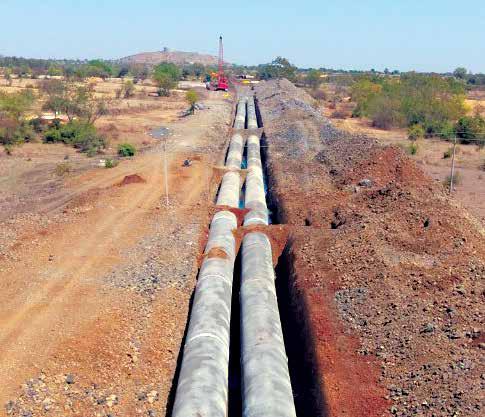
Pipe laying

Parthiban and team still have a long way to go but are on track and with 60% of the works completed, they confidently foresee completion by January 2022.
Kundalia Right Bank Canal is another significant lift irrigation project that made good progress overcoming some initial setbacks and although there is a fair distance to cover, Project Manager, Dinesh Kharbanda, has things under control. “We have surveyed 82328 Ha of gross consolidated area, constructed three distribution chambers and a residential building for the client, achieved around 90% of RCC Works, laid 200 Km of pipeline and completed the main structural works.”

“We have surveyed 82328 Ha of gross consolidated area, constructed three distribution chambers and a residential building for the client, achieved around 90% of RCC Works, laid 200 Km of pipeline and completed the main structural works.”
Dinesh Kharbanda
Project Manager, Kundalia Right Bank Canal
Working from his base at Zirapur, a remote hamlet, Planning Manager, Kirtish Mahajan, had to deal with the labour issue as almost 80% of the workforce returned to their villages when operations resumed. “We were able to convince them to return thanks to a series of workmen motivation drives organized by the EHS and IR departments highlighting the secure arrangements made at camps. We commenced with rotational shifts before gradually moving ahead as the numbers rose to 605.” To resolve some issues, they faced on the ground, the team roped in the Sarpanch and other leaders to convince the villagers about how they stood to gain from the project that opened fronts for work resumption. Having almost crossed the half-way stage, Dinesh is targeting to deliver the project by June 2022.
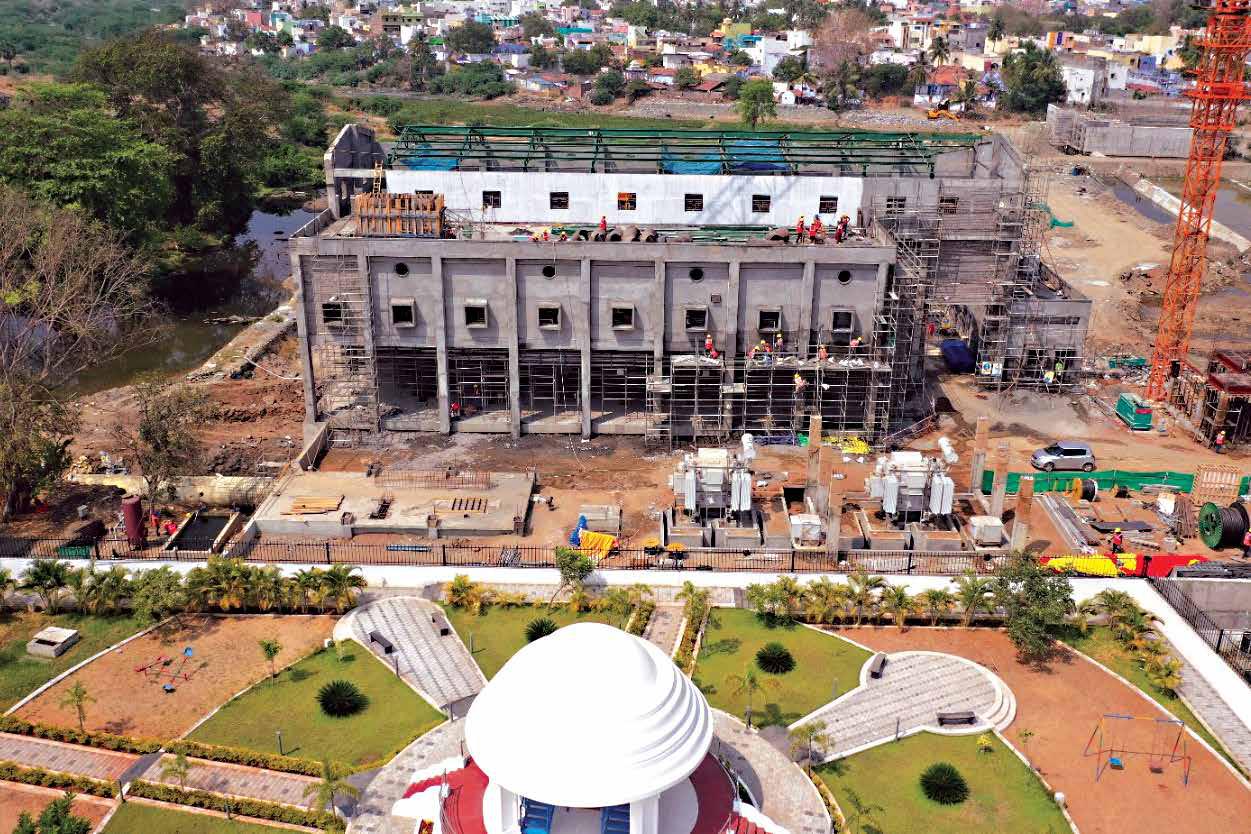
Pump House 1, near Kalingarayan Anaicut, Bhavani
Work is proceeding at a feverish pace at the Athikadu Avinashi Project near Coimbatore in Tamil Nadu with Project Director, Ravi Kumar Padnavis, steering critical tasks, “We have to lay over 250 km of MS pipeline, 805 km of HDPE pipeline, construct six pump houses, install 46 VT pumps along with associated civil, electrical and instrumentation works. Once commissioned, the scheme will draw 1.5 TMC of surplus water from river Bhavani downstream of the Kalinganarayan anicut to fill 32 public work department tanks, 42 union tanks and 971 ponds in three districts while irrigating 24, 468 acres.”
Digital interventions are proving to be the difference for Project Manager Venkateswaran Thirupathi as most of his documentation for work processes and approvals have been secured online during the lockdown apart from sourcing around 400 T of f surplus formwork materials from other projects to complete critical works. “Just to give an example,” adds Ravi Kumar, “we surveyed a 30 Km stretch along the national highway in a day with Real Time Kinematic drone which in the conventional mode would have taken us at least 8 days. From planning to execution, safety, quality, and even administrative tasks, the digital route has made our job easier, more precise, avoiding rework.” The digitalization drive has won one more disciple!

“From planning to execution, safety, quality, and even administrative tasks, the digital route has made our job easier, more precise, avoiding rework.”
Ravi Kumar Padnavis
Project Director, Athikadu Avinashi Project
Amid crisis lies great opportunity mentions Ravi Kumar highlighting on how the team successfully addressed labour issues. “A special taskforce team spearheaded by the Project Director himself reached out to numerous workmen gangs across the length and breadth of the country to augment the workforce once the lockdown was lifted. Apart from bolstering the workmen confidence that it was safe to work at site, the team spent around INR 95 lakhs on their travel arrangements. The team’s concerted efforts have translated into 1754 workmen presently engaged across work fronts. The client was delighted at the pace with which the project was progressing as the pump house structures – I, II & III were raised within three months. The good work was commended with a slew of appreciation certificates as well.” With 76% of invoicing completed, the team is gunning to hand over their project by December 2021.
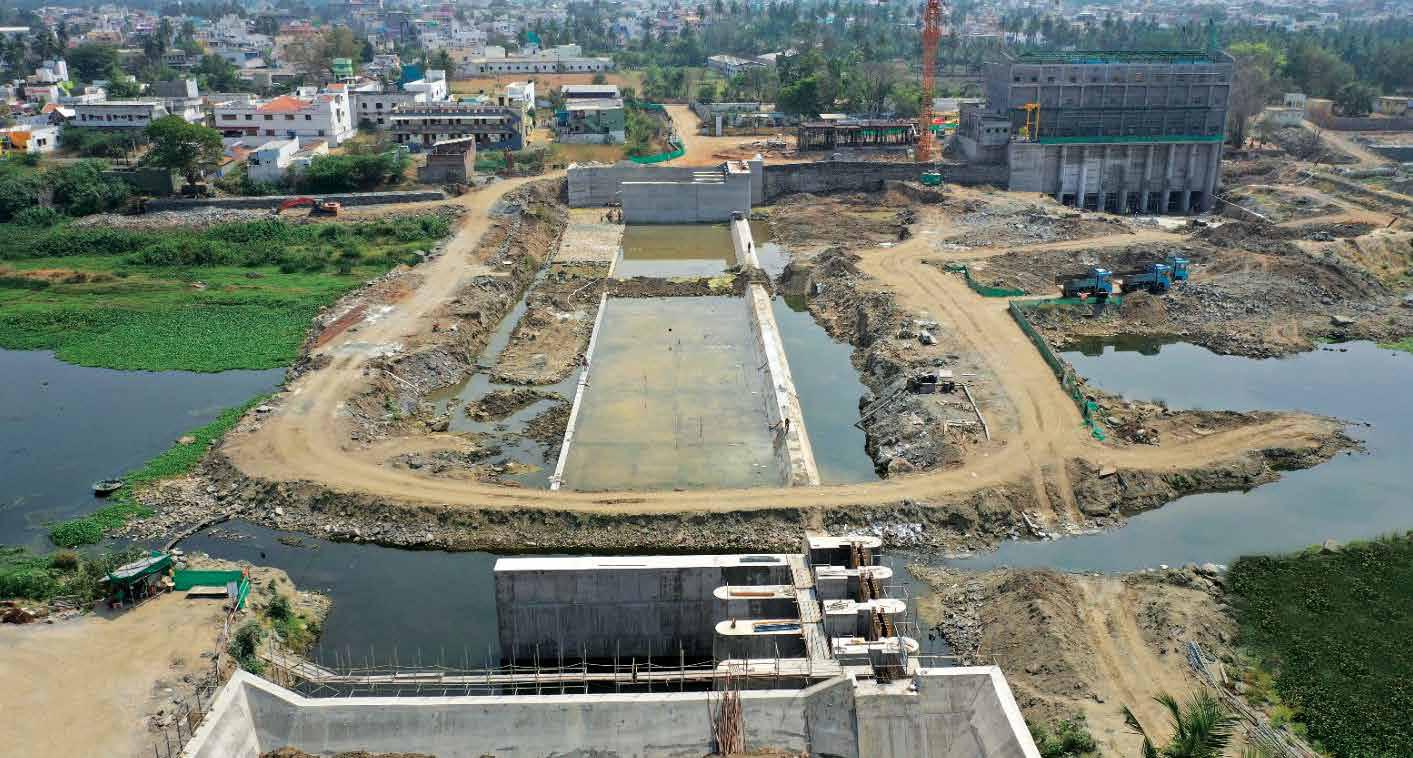
Diversion Weir, near Kalingarayan Anaicut, Bhavani
An all-in-one package
There is something in this package for everyone, says Mukesh Singh, Project Manager, Infrastructure Works at Bidkin. “The very fact that two ICs, WET and TI, are executing significant portions of the job makes this both a competitive and a complementary job,” he grins knowingly.
WET IC is responsible for design, construction, testing, operation, and maintenance of infrastructure works for road drains, culverts, bridges, water supply, power system including sewerage and common effluent treatment plant for sector A Phase III in the AURIC Bidkin Industrial Area, Aurangabad.
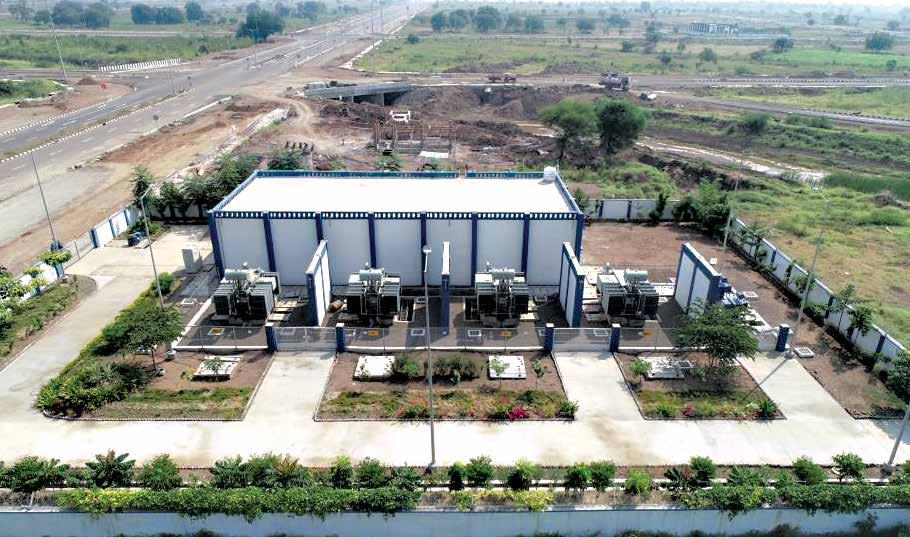
Zonal substation at Bidkin
Sequencing and scheduling of works was vital as this is a new industrial city developed in line with the country’s Smart City vision. The team led by experienced managers ensured that clashes in design were aligned through BIM before execution began. Apart from core water infrastructure works, deliverables include electrical, instrumentation and some portion of mechanical works with the onus on intra-department handing and taking over.
To overcome the setback of the labour exodus, “we resumed by engaging the available workmen from our local contractors on a trial basis,” points out Mukesh, “and found it to be productive, at least temporarily, while parallelly we continued to diligently source workmen from other states. Soon, we increased our numbers and worked out two and three shifts to accelerate progress across fronts.”

“We resumed by engaging the available workmen from our local contractors on a trial basis and found it to be productive, at least temporarily. Soon, we increased our numbers and worked out two and three shifts to accelerate progress across fronts.”
Mukesh Singh
Project Manager, Infrastructure Works at Bidkin
Along with a range of digital tools, Mukesh and his team have banked on L&T’s EPC prowess by implementing a slew of value engineering methods such as setting up vertical shaft dry precast factories for RCC pipes, ducts, paver blocks, manholes and kerb stones, extrusion welding for HDPE liner and spot welding for reinforcement that have propelled them to complete almost 99% of the works. They now await the client’s directives on power and water supply to commission the project.